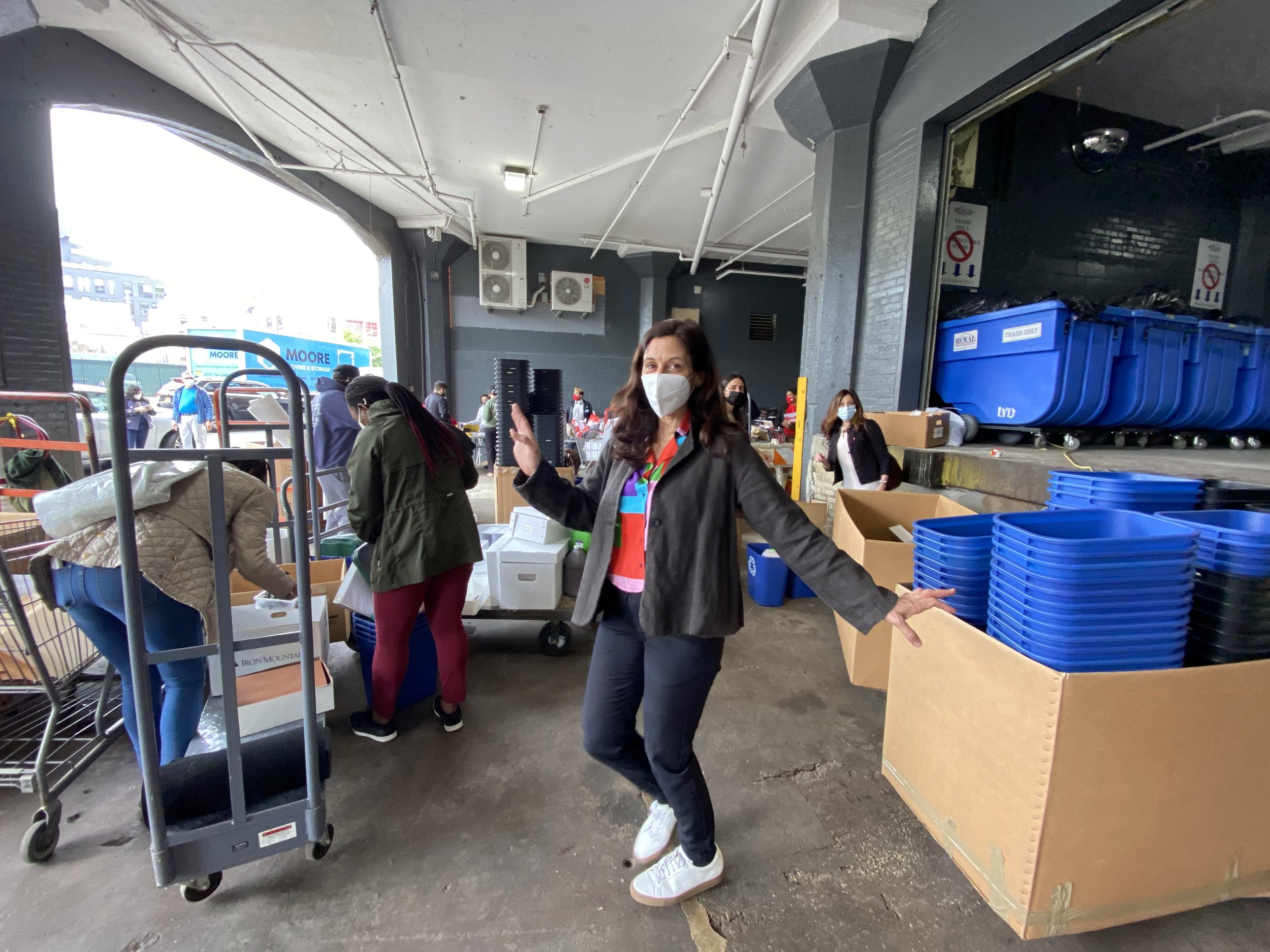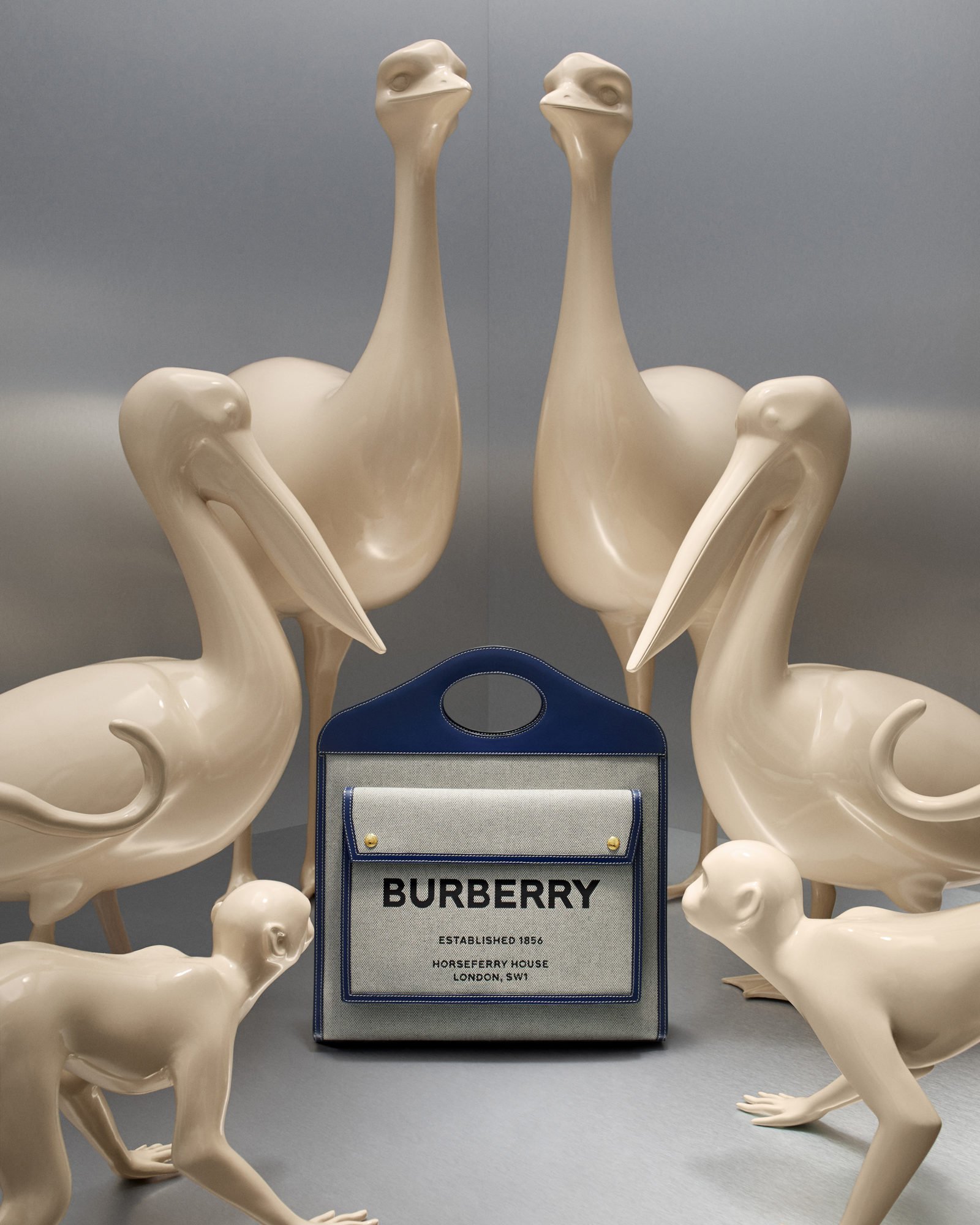Tara Sansone: Executive Director of Materials for the Arts
Materials for the Arts (MFTA) provides New York City arts nonprofits, public schools, and city agencies with access to free materials. MFTA strives to keep valuable materials from entering the landfill and put these materials into the hands of arts professionals, educators and students across the five boroughs. MFTA gives unwanted items the opportunity to become something new through creative reuse, inspired education, and unlimited imagination.
Friends of Materials for the Arts, in collaboration with the City of New York and the creative community, is the nonprofit organization that guides and supports educational programming, warehouse operations, and other initiatives of Materials for the Arts.
Tara Sansone at the MFTA loading dock during their Curbside Pickup program while warehouse was temporarily closed for in-door shopping
Hi Tara, it’s wonderful to connect with you. We’d love to learn about the history of MFTA.
MFTA is a city agency. We’re a program of the Department of Cultural Affairs, and we've been in existence for about 43 years. There’s a really sweet story about how it started. Someone from the Department of Cultural Affairs was in touch with an employee at the Central Park Zoo who needed a new refrigerator. They contacted a local radio station, and they put the word out to New Yorkers. “Does anyone have a refrigerator for the Central Park Zoo?” Several refrigerators were offered for donation. And that’s how Materials for the Arts was born.
We're a membership based organization that serves nonprofit arts organizations, plus all the city agencies, like NYC Administration for Children's Services, the NYC Parks Department, and many more including the FDNY.
Photo Credit: Jordana Vasquez
Photo Credit: Jordana Vasquez
In addition to city agencies, who else can become members of MFTA?
There used to be a more rigid application process for membership. But since the pandemic we’ve seen need from diverse nonprofits like mutual aid groups, and social justice groups. The Commissioner of Cultural Affairs, Gonzalo Casals, and I discussed how we could reach New Yorkers who didn’t necessarily fit the criteria for MFTA membership. Our conversation led us to expanding our views of what “arts and culture” means to the city. We now include groups that serve undocumented immigrants, street vendors, Black Lives Matter groups, and groups that help runaway LGBTQ youth. Another one I love is Refoundry. Refoundry works with formerly incarcerated adults, teaching them the trade of refinishing and reupholstering furniture.
Can you tell us a story about something that’s been donated from an event that benefitted some of these groups?
After Fashion Week, we received emails from a marketing company that was working with a big fashion house. They had a huge amount of bright, yellow carpeting. I didn’t realize how much it actually was. So the truck pulled up, and the Warehouse Associate called and said, “You need to come down here and see this.” There was a 20-foot box truck that’s full of carpet. One thing I've learned in this job is not to panic. They were already offloading the carpet, but we had to stop it, because we literally have no place to put all this carpet.
Long story short, I called my contact number one, “Will you take some of this carpet?” and they said, “We can't.” So I called contact number two, and I said, “Will you take this carpet?” She said, “Absolutely.” I said, “Will you take the whole truck?” She said, “100%.” And I said, “If I send the truck to you right now, will you have the help to offload it?” she said, “Definitely.”
So this beautiful, yellow carpet went to a nonprofit arts organization called Chashama that just had their gala in Times Square. And when I went to the gala, I saw that almost the entire Gala was covered in this carpet. It was incredible to see how many different artists integrated it into their showcases.
Another fun story: We received an email from our friends at Burberry. They wanted to send a truck with these beautiful props. We looked at the props online, and it looked manageable. So this huge truck showed up from Florida. There was no way we were turning it away, but we didn’t have the machinery in the warehouse to get this massive, custom crate off the truck. I won’t bore you with the details, but long story short, I said, let’s put our heads together and figure this out. And we did.
And inside the crate were gorgeous prop animals, like 9-10 feet tall giraffes, and monkeys, gorillas and toucans made of resin in a ghostlike color. We had an entire zoo. And so many people benefited from that donation, from the Staten Island Zoo, to theatre companies, to schools that were doing productions like The Jungle Book.
One of our artists, Yazmany Arboleda, bejeweled some of them with sequins, and put them on a vehicle that became The People's Bus.
Those are just two examples of us taking items that would otherwise end up in landfill. But now I’m thinking, “What is Chashama going to do with the carpet now?” I’m reaching out to them to find a solution. Groups put on beautiful productions, but then they're stuck with items they don't need anymore. We want to take them back, so we can offer it out again, so it can have another life. It’s funny because the staff gets frustrated when they think we've gotten rid of something, and then it comes two months later. But the goal is keeping it out of landfill. Right? It's about creative reuse.
It's circularity you're talking about, it's like, how can we continue to keep these items circulating? But even one reuse is better than single use.
Absolutely. Materials for the Arts wants to be more known by the event industry. I hope we can be a resource for event planners, so they can factor us into their planning. There's so many brand new items used for events in New York City, and even if we get a small percentage of that into the hands of artists, that’s amazing.
Are the donations tax deductible? Money saved through tax deductions could cover the cost of trucking the materials to your warehouse in Long Island City.
Yes, we offer a tax letter to anyone who donates for the value they determine. We also have our recipients write thank you letters. Our donors love to hear that their fabric went to this Mexican dance company, and got turned into costumes. We've even had one of our event companies come in and do a tour. And the whole team came to volunteer, which was absolutely amazing. I feel like, in order to have people really understand what we do, you have to see and experience our 25,000 square foot space.
Photo Credit: Laura Fuchs
Photo Credit: Jordana Vasquez
You know the saying, “Someone’s trash is someone else’s treasure.” Someone just did an event in Times Square, and had costumes that were only worn for a couple of hours. They looked like they were high fashion. And he was able to send them here in an Uber.
We’ve got 20 pallets of Lysol wipes and hand sanitizer, things that desperately need to be kept out of landfill. Kate Spade just donated millions of masks to us. And we've been giving them out to New York Health and Hospitals, and the Administration for Children's Services for shelters.
With sustainability, there’s the part about the environment, but there’s also the cultural and social aspects. MFTA really checks all the sustainability boxes. These donations impact the community in such a positive way. And waste is kept out of the landfills.
Absolutely. We're engaging in a reciprocal relationship, because we're helping you be sustainable, and you're donating items that people need but can't afford for classrooms and productions.
We have an Education Program, and we host two field trips a day. We also have an Artist in Residency program where two to three artists a year get to use our studio. The artists can use anything they find in the warehouse to create installations for our onsite gallery.
Photo Credit: Laura Fuchs
So when kids come in on field trips, they're able to see this art, and understand that all of these items were found in the warehouse, and made by a professional artist. And then they get to make their own art with items they find in the warehouse. They learn you don't have to be wealthy to be an artist, you just have to be creative. Something you're about to throw out, like a cereal box, can be turned into something else.
What are some things that you see coming in from events that are really in demand?
We get an abundance of glassware, vases, and candles. Faux flowers never stay long in the warehouse. Right now, we have groups asking us for holiday decorations. Historically we get these from event companies after holiday parties. I don’t know if it’s a supply chain issue or what, but this year we haven’t gotten a lot of holiday decorations donated to us. But that shouldn’t stop people from being creative.
Photo Credit: Jordana Vasquez
The Frank Sinatra School of the Arts just emailed me. They're a fantastic high school right down the street from us. And they said we’re doing Rent this year, and we need fabric and stuff for Rent. But we also want to decorate our lobby with holiday decor, do you have any Christmas stuff? and I said, “We don't, but come in and look around and make Christmas. Make it out of what you can find.” And they were like, “Wonderful, we will!”
MUSE Note: There are creative reuse organizations all across the country. If you are hosting an event in another city, simply Google “creative reuse” in your town, and check out the SCRAP website. SCRAP Creative Reuse is a national network of creative reuse centers.
Photo Credit: Jordana Vasquez











